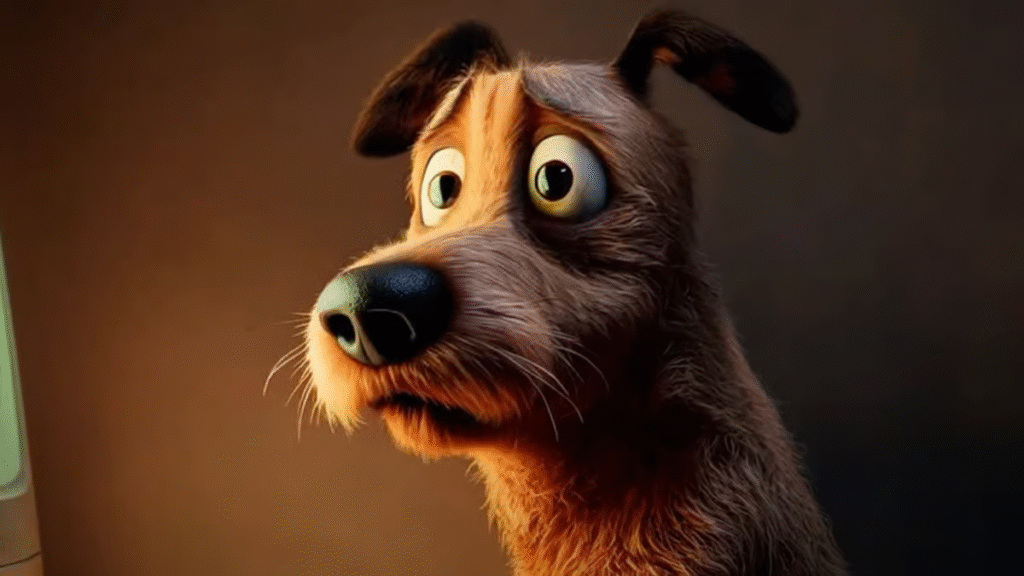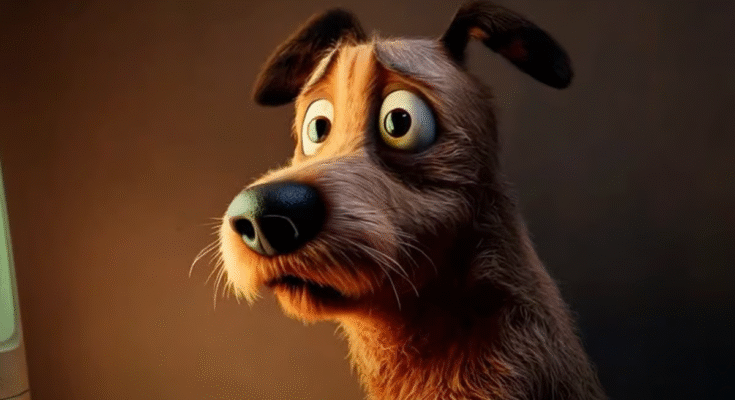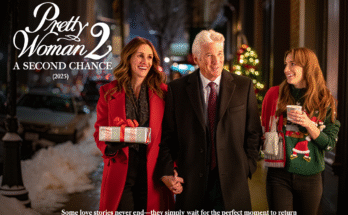From the opening frame of Courage the Cowardly Dog (2025), it becomes clear this is not the playful surrealism fans remember. Antoine Fuqua’s reimagining (yes, the director of Training Day and The Equalizer lends his touch here) takes the bizarre charm of the cartoon and stretches it into a full-blown nightmare. What was once comically eerie is now bone-deep horror, and yet, somehow, the heart of Courage’s story still pulses beneath the terror.

The film wastes no time in plunging audiences into dread. The farmhouse—lonely, decrepit, and dwarfed by an endless desert—becomes a character of its own. Wind howls like tortured spirits across the empty plains, and shadows stretch unnaturally long, as if the world itself conspires against Courage. Fans of the original show will instantly recognize the setting, but in live-action, it feels suffocating, oppressive, and hostile.
At the center is Courage, the small, anxious dog whose whimpers and trembling form the fragile backbone of the story. Here, his fear is amplified to terrifying effect. Every nightmare he faces takes shape from his deepest anxieties—towering monsters, labyrinths of shifting walls, grotesque faces emerging from mirrors. What made the cartoon charming now feels unnervingly real, a phantasmagoria of horrors that claw at both him and the audience.

Muriel and Eustace remain familiar yet profoundly altered. Muriel is the beacon of warmth, her gentleness the one anchor Courage clings to. Eustace, however, is more sinister this time—a bitter man whose cruelty hints that the farmhouse’s curse may feed off his malice. The dynamics within this isolated family transform the domestic space into both a sanctuary and a prison. The tension of whether Courage can truly protect them drives much of the film’s emotional weight.
Enter Liam Neeson, in a role shrouded in mystery until its shocking reveal. His character ties directly to the origins of the farmhouse’s curse, a wanderer burdened with knowledge of the land’s ancient horrors. Neeson delivers with trademark gravitas, offering both exposition and menace. He is less a guide and more a warning—living proof of what happens when one stares too long into Nowhere’s abyss.
The horror itself is varied and relentless. One sequence features a shape-shifting demon that twists into the forms of those Courage loves most, forcing him to fight illusions as much as reality. Another plunges the farmhouse into a dimension of shifting geometries, a surreal nightmare reminiscent of Lovecraft’s cosmic dread. Each confrontation escalates the stakes, forcing Courage into battles that are as psychological as they are physical.

What makes the film particularly effective is its atmosphere. Instead of constant jump scares, it leans on dreamlike unease, lingering shots of empty hallways, and the uncanny stillness of the desert night. Reality bends and warps, creating the sense that the farmhouse is suspended between dimensions. This surreal texture honors the spirit of the original series while grounding it in something far more haunting.
And yet, beneath the horror, lies a story about love and courage—ironically, just as the title promises. Courage’s desperation to protect Muriel, even as his body shakes and his eyes widen in fear, is heartbreaking. His bravery isn’t loud or muscular; it’s quiet, trembling, but unyielding. This emotional core elevates the film from pure horror to something deeply resonant: a parable about the strength found in vulnerability.
Visually, the movie is breathtaking in its grotesque beauty. The farmhouse creaks with age, bathed in moonlight that feels more like surveillance than illumination. The creatures are practical effects blended with CGI, giving them a tactile, visceral presence. From smoke-choked apparitions to cosmic horrors clawing at the sky, every nightmare is rendered with meticulous artistry.

By the climax, when Courage faces the curse at its root, the story becomes less about monsters and more about the nature of fear itself. The resolution is haunting but hopeful, affirming that even in a universe of unimaginable horrors, love can still carve out a fragile light. It’s a conclusion that lingers long after the credits, equal parts terrifying and tender.
With a score of ⭐8.8/10, Courage the Cowardly Dog (2025) succeeds as both a bold horror reimagining and an unexpectedly moving tale. It transforms childhood nostalgia into cinematic dread, balancing surreal spectacle with emotional weight. Ultimately, it reminds us that courage isn’t the absence of fear—it’s choosing to fight for love even when the darkness feels infinite.



